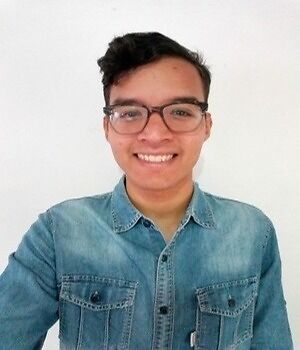Pet Therapy and Its Benefits


Written and verified by the psychologist Ebiezer López
Human beings and animals have shared a bond for thousands of years. In fact, nowadays, many of us live with one in our home. Indeed, we feel a close connection with our pets and find great satisfaction in the relationship we have with them. In fact, pet therapy has emerged as a treatment alternative that seeks to take advantage of this emotional bond.
Although it’s still currently being researched, pet therapy shows promising results. In this article, we’ll take a look at these interventions and how they can benefit our mental and physical health.
Pet therapy
Also known by the name of Animal-Assisted Interventions (AAI), pet therapy is a set of therapeutic techniques and methods that involve animals. Its objective is to take advantage of human-animal interaction as a tool to address physical and psychological discomfort.
AAI encompasses different types of activities:
- Animal Assisted Therapy (AAT). These are structured treatment sessions with therapeutic objectives. The purpose of AAA is to alleviate the symptoms generated by certain physical and mental health disorders. However, it must be administered by a health professional with the necessary training.
- Animal Assisted Education (AAE). A type of therapy with pets that focuses on the educational field. Its aims are to achieve academic objectives. For example, raising students’ motivation to get better grades.
- Animal Assisted Activities (AAA). Interventions with a more spontaneous and open approach, without established therapeutic purposes. They do occasionally have a therapeutic value but tend to have a more recreational focus. In addition, they don’t need to be led by a health professional or educator.
As you can see, IAA is a wide field with different modalities and objectives. However, in all cases, this type of therapy must be directed by trained personnel. Indeed, it’s important that the pet handler is experienced in managing animal behavior. It’s also recommended that the animal meets certain standards.

What animals can participate in pet therapy?
Today, the range of animals we consider to be domestic pets has expanded. For example, snakes, owls, and even raccoons are adopted. That said, not all species are suitable for participating in pet therapy.
The animals used in IAA are creatures with a gentle and empathetic nature that enjoy contact with human beings. For instance, dogs, cats, horses, and dolphins, among others. They usually have cheerful and calm temperaments.
On the other hand, snakes and owls are species that usually live alone. Furthermore, they don’t show affection and will tend to interpret most of our gestures as a threat.
Following along these lines, any animal that participates in health or education interventions must have completed its vaccination schedule.
Therapeutic benefits
According to a study conducted by Oropesa Roblejo et al. (2009), pet therapy has a positive impact on different areas of human development.
Physical health
IAAs often involve playing games or other types of activities in the company of animals. Since movement is required to participate, it’ll reduce the effects of a sedentary lifestyle. At the same time, moving around promotes blood circulation, weight loss, and reduction of pain in muscles and joints.
Mental health
Koukourikos et al. (2019) conducted a systematic review concerning the benefits of animal therapy on mental health. Activities with animals were found to help reduce the expression of negative symptoms in patients with mental disorders. In addition, these interventions were found to allow participants to develop skills to improve their quality of life.
Nevertheless, the benefits may vary depending on the animal worked with. For example, the company of cats is said to help reduce stress due to their calm nature. On the other hand, dogs are more active and playful and tend to encourage positive feelings such as joy or love.
Social
Animals promote the creation of social bonds in different ways. A common example is when you go for a walk with your dog and he decides to play with another in the park. You often end up interacting with the other dog’s handler and might even start a friendship with them over time.
There are also assistance dogs that accompany people who suffer from motor or perceptual difficulties.

Advice regarding pet therapy
If you think that you or someone you know could benefit from pet therapy, contact a center or professional that offers this service. However, make sure you verify the credentials of the institution or specialist offering the service. Remember that this person shouldn’t only have knowledge about mental and physical health, but also animal care. Also, remember to check that the animal is clean, vaccinated, and appears healthy.
Finally, if you’re interested in working with your own pet, you can discuss it with the center or a professional pet therapist. They’ll be in charge of determining whether or not your pet meets the appropriate conditions for pet therapy.
Human beings and animals have shared a bond for thousands of years. In fact, nowadays, many of us live with one in our home. Indeed, we feel a close connection with our pets and find great satisfaction in the relationship we have with them. In fact, pet therapy has emerged as a treatment alternative that seeks to take advantage of this emotional bond.
Although it’s still currently being researched, pet therapy shows promising results. In this article, we’ll take a look at these interventions and how they can benefit our mental and physical health.
Pet therapy
Also known by the name of Animal-Assisted Interventions (AAI), pet therapy is a set of therapeutic techniques and methods that involve animals. Its objective is to take advantage of human-animal interaction as a tool to address physical and psychological discomfort.
AAI encompasses different types of activities:
- Animal Assisted Therapy (AAT). These are structured treatment sessions with therapeutic objectives. The purpose of AAA is to alleviate the symptoms generated by certain physical and mental health disorders. However, it must be administered by a health professional with the necessary training.
- Animal Assisted Education (AAE). A type of therapy with pets that focuses on the educational field. Its aims are to achieve academic objectives. For example, raising students’ motivation to get better grades.
- Animal Assisted Activities (AAA). Interventions with a more spontaneous and open approach, without established therapeutic purposes. They do occasionally have a therapeutic value but tend to have a more recreational focus. In addition, they don’t need to be led by a health professional or educator.
As you can see, IAA is a wide field with different modalities and objectives. However, in all cases, this type of therapy must be directed by trained personnel. Indeed, it’s important that the pet handler is experienced in managing animal behavior. It’s also recommended that the animal meets certain standards.

What animals can participate in pet therapy?
Today, the range of animals we consider to be domestic pets has expanded. For example, snakes, owls, and even raccoons are adopted. That said, not all species are suitable for participating in pet therapy.
The animals used in IAA are creatures with a gentle and empathetic nature that enjoy contact with human beings. For instance, dogs, cats, horses, and dolphins, among others. They usually have cheerful and calm temperaments.
On the other hand, snakes and owls are species that usually live alone. Furthermore, they don’t show affection and will tend to interpret most of our gestures as a threat.
Following along these lines, any animal that participates in health or education interventions must have completed its vaccination schedule.
Therapeutic benefits
According to a study conducted by Oropesa Roblejo et al. (2009), pet therapy has a positive impact on different areas of human development.
Physical health
IAAs often involve playing games or other types of activities in the company of animals. Since movement is required to participate, it’ll reduce the effects of a sedentary lifestyle. At the same time, moving around promotes blood circulation, weight loss, and reduction of pain in muscles and joints.
Mental health
Koukourikos et al. (2019) conducted a systematic review concerning the benefits of animal therapy on mental health. Activities with animals were found to help reduce the expression of negative symptoms in patients with mental disorders. In addition, these interventions were found to allow participants to develop skills to improve their quality of life.
Nevertheless, the benefits may vary depending on the animal worked with. For example, the company of cats is said to help reduce stress due to their calm nature. On the other hand, dogs are more active and playful and tend to encourage positive feelings such as joy or love.
Social
Animals promote the creation of social bonds in different ways. A common example is when you go for a walk with your dog and he decides to play with another in the park. You often end up interacting with the other dog’s handler and might even start a friendship with them over time.
There are also assistance dogs that accompany people who suffer from motor or perceptual difficulties.

Advice regarding pet therapy
If you think that you or someone you know could benefit from pet therapy, contact a center or professional that offers this service. However, make sure you verify the credentials of the institution or specialist offering the service. Remember that this person shouldn’t only have knowledge about mental and physical health, but also animal care. Also, remember to check that the animal is clean, vaccinated, and appears healthy.
Finally, if you’re interested in working with your own pet, you can discuss it with the center or a professional pet therapist. They’ll be in charge of determining whether or not your pet meets the appropriate conditions for pet therapy.
All cited sources were thoroughly reviewed by our team to ensure their quality, reliability, currency, and validity. The bibliography of this article was considered reliable and of academic or scientific accuracy.
- Koukourikos, K., Georgopoulou, A., Kourkouta, L., & Tsaloglidou, A. (2019). Benefits of animal assisted therapy in mental health. International journal of caring sciences, 12(3), 1898-1905.
- Oropesa Roblejo, P., García Wilson, I., Puente Saní, V., & Matute Gaínza, Y. (2009). Terapia asistida con animales como fuente de recurso en el tratamiento rehabilitador. Medisan, 13(6), 0-0.
This text is provided for informational purposes only and does not replace consultation with a professional. If in doubt, consult your specialist.







